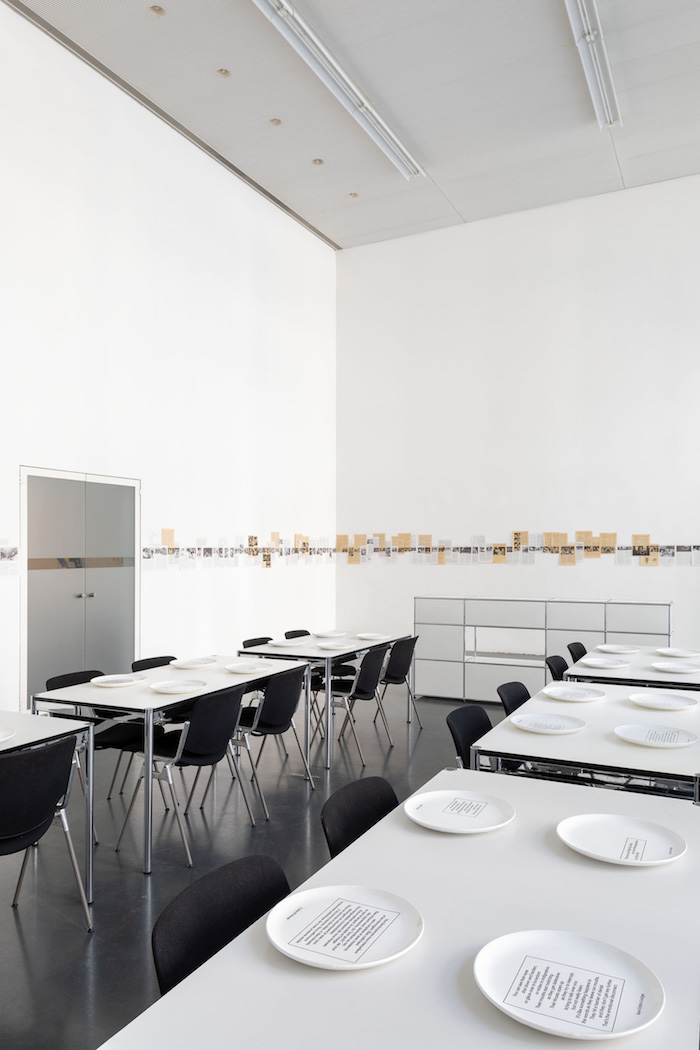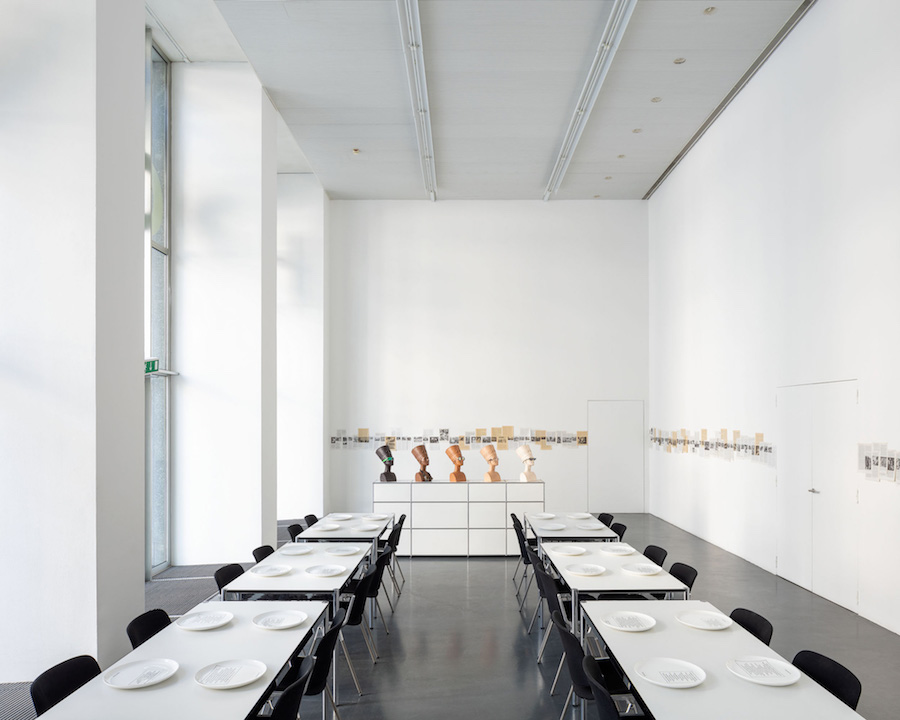
English text below
L’appropriazione, la citazione e la de-costruzione sono le pratiche artistiche del futuro. L’attuale proliferazione rizomatica di immagini, teorie e tendenze, favorisce il costituirsi di un’opera d’arte dallo statuto sempre più ibrido, in cui i confini tra autorialità e reificazione risultano ambiguamente riconfigurati. L’originalità di tali pratiche e il loro essere “futuribili” risiede tanto nella natura temporalmente elastica delle stesse, quanto nel loro potenziale transmediale e transculturale. Esse svolgono la funzione di tropi – figure ricorrenti in contesti storici eterogenei – attivati al fine di interpretare il presente attraverso la riqualificazione critica di costrutti, postulati e segni del passato. Oggetti di tali processi di appropriazione, citazione e de-costruzione possono essere sia l’immagine – e, per estensione, l’icona, il capolavoro, il brand, lo statement e persino un determinato orientamento estetico – sia le ideologie e le forme di pensiero.
La riflessione proposta da Ramaya Tegegne (Ginevra, Svizzera) nella personale I is we, we is them, them is us, us is I, I is you and you is I, presentata all’Istituto Svizzero di Milano e curata da Samuele Gross, si configura in un’esplosiva messa in atto di tutte queste operazioni. In Tegegne l’ideologia, come già in Marx, non pare essere principalmente intesa quale plesso teorico di idee, quanto nella sua peculiare accezione di raffigurazione delle strutture imperanti. I temi dell’autorialità, dello sguardo culturalmente e sessualmente situato, così come del rapporto immagine-testo e del sentirsi-visto proprio dell’oggetto inanimato vengono così immessi in un circuito visuale in cui assoluto rilievo è riservato all’esperienza spettatoriale, di contro ad una esibita destituzione del gesto creativo.
Ripensare l’ideologia in Ramaya Tegegne significa raccogliere, stratificare e ibridare su tutti i fronti soggetti socialmente connotati, al fine di creare delle installazioni apparentemente “trasparenti”, ma in realtà frutto di una problematica mise-en-abyme.
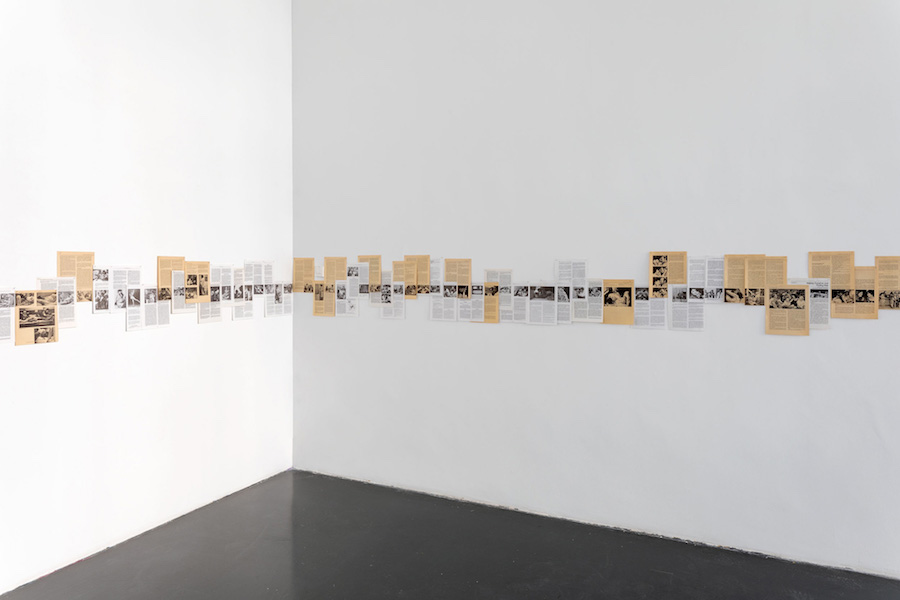
Il caso della serie di Nefertiti appare in questo senso emblematico. Il percorso mentale di Tegegne potrebbe essere così descritto: in primis vi è la scelta di un’immagine “riconfigurata” da parte di un peculiare regime scopico, quale può essere ad esempio quello del cinema americano degli anni Sessanta – si pensi a Nefertiti, Queen of the Nile del 1961 – in cui la celeberrima Regina d’Egitto rispecchiava in fondo un’identità occidentale, nonostante gli attributi di gusto orientale. In secondo luogo, l’artista procede comportandosi alla stregua di un iconologo o di un collezionista, appropriandosi delle manifestazioni artistiche maggiormente significative del medesimo tema: qui, il busto di Nefertiti, oggi visibile alla Neues Museum di Berlino, viene moltiplicato nelle due variazione contemporanee di Isa Genzken – Nofretete (2012-18) – e di Fred Wilson – Grey Area (Brown version) del 1993 – a loro volta mixate l’una con l’altra al fine di generare un’opera effettivamente “nuova”. E che ne è stato dell’autorialità? Si potrebbe oggi pensare ad un principio di autorialità accessorio, fluido o in qualche maniera connaturato ad una meditazione teoretica piuttosto che formale? La triplice sovrapposizione “delle” Nefertiti – ritratto antico, moltiplicazione moderna e reificazione monocroma – pare confermarci che l’autorialità artistica oggi è in primis una questione ideologica e si esprime attraverso modifiche formalmente minime – dagli occhiali Neo Matrix che ci impediscono di guardare negli occhi la Regina, che ammiccano ad un trend globale – eppure notevoli sotto il profilo dei contenuti.
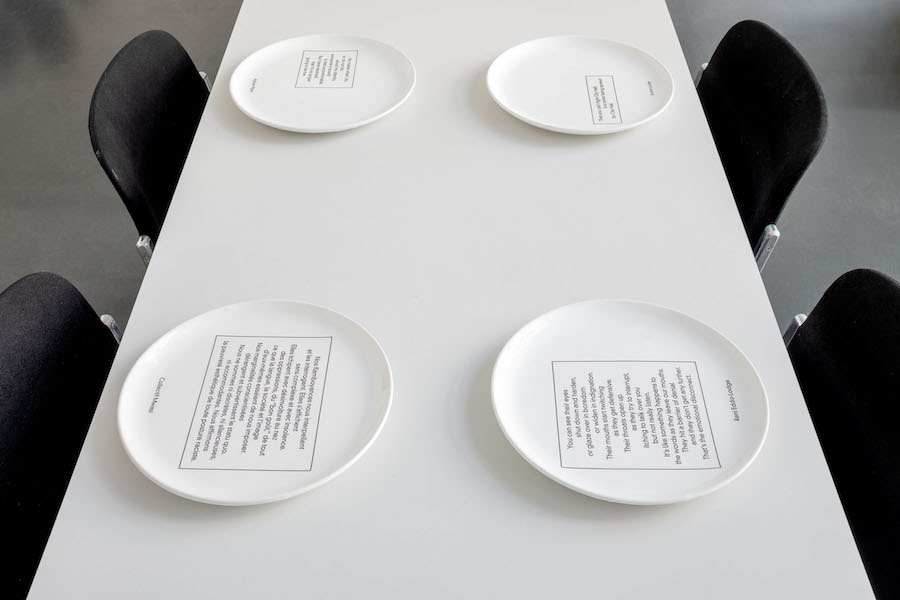
In Our Bodies Our Ourselves siamo corporeamente chiamati a vivere, attraverso lo sguardo e lo spostamento concreto nello spazio, le battaglie e le considerazioni emerse nell’ambito di Our Bodies Selves, un gruppo femminista nato a Boston nel maggio del ’69. L’appropriazione del testo e la sua dislocazione – quest’ultimo appare letteralmente squadernato e esposto in sequenza lungo le pareti dell’Istituto Svizzero – provoca una temporalità dell’opera fondamentalmente inattesa. L’autorialità qui si identifica da un lato nella restituzione del testo in una dimensione pubblica e condivisa e dall’altro nel tempo inevitabilmente richiesto al soggetto vedente – un tempo fermo e un tempo in itinere- al fine di accostarsi al saggio.
Quelle che potrebbero apparire installazioni di immediata lettura, non lo sono. Ciò che potrebbe sembrare una innocua ri-presentazione, non lo è. Ciò che dell’appropriazione deve essere ribadito, relativamente alla produzione di questa giovane artista donna, è il coefficiente eversivo e il desiderio di problematizzare il presente ricorrendo a materiali storicizzati, come accade in maniera potente in The Dinner Party, rivisitazione in chiave black di un lavoro di Judy Chicago del 2002. Ad essere chiamati in prima persona con gli occhi, lo sguardo e il corpo siamo noi. Nessuna immagine è trasparente, nessuna ideologia è definitiva e ogni punto di vista, ogni pratica artistica autoriale, ogni forma di sapere sedimentato può divenire il punto di partenza per una rilettura chiastica che metta in discussione modelli affermati e consuetudini radicate.
Fino al 26.10.2019

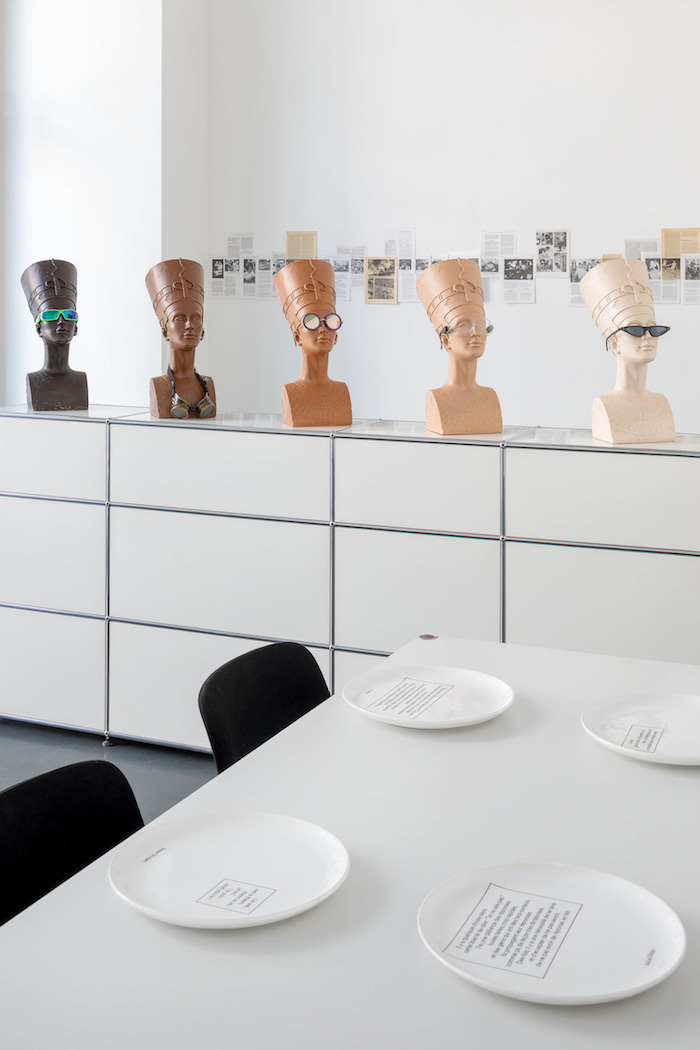
Deconstructing Ideology: Ramaya Tegegne — Istituto Svizzero, Milano
Text by Valentina Bartalesi —
The appropriation, the quote and the deconstruction are future’s artistic practices. The current rhizomatous proliferation of images, theories and tendencies is favouring the formation of a hybrid work of art, in which the boundaries of authorship and reification are fleeting. The authenticity and futurity of those practices resides both in their temporary elastic status and in their transcultural and transmedia potential.
Those practices have the function of tropes – rhetoric figures which reappear in heterogeneous historical periods – activated to reinterpret present through the critical upgrading of constructs, postulates and signs of the past. The subject of these processes of appropriation, quote and decostruction can be the image – and so the icon, the masterpiece, the brand and peculiar aesthetic inclinations – and the ideology and forms of thoughts. The reflection proposed by Ramaya Tegegne inside the exhibition I is we, we is them, them is us, us is I, I is you and you is I, curated by Samuele Gross and on show at the Swiss Institute in Milan, appears an explosive implementation of these operations. The ideology for Tegegne – such as in Marx – is not just a theoretical plexus of ideas: it is the representation of predominant structures. The themes of the authorship, the cultured and sexualized gaze, the relationship image/text, the feeling of being seen undertaken by an inanimate object are led into a visual circuit where the spectator has a dominant role and the authorship is dismissed.
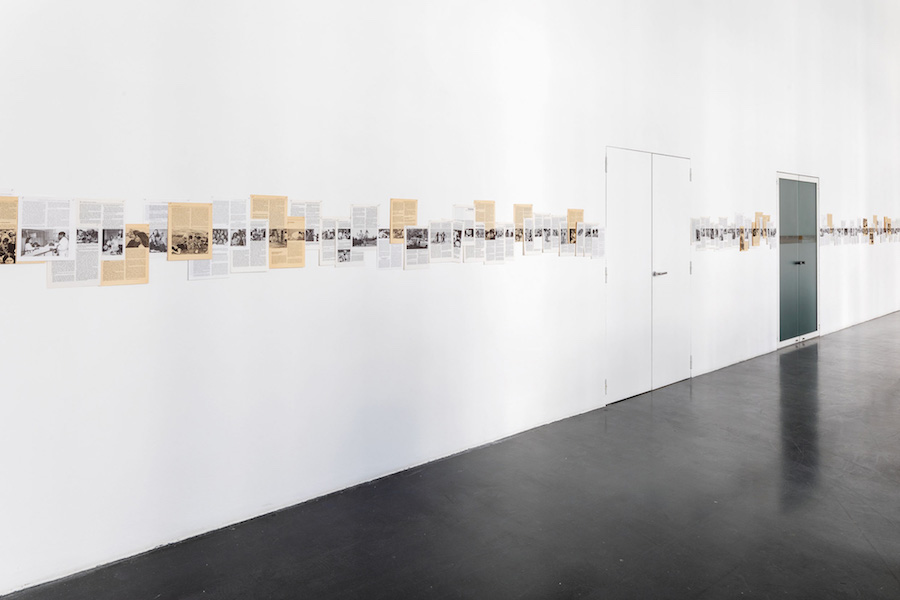
In Ramaya Tegegne’s poetic, the reconsideration of ideology aims to collect, stratify and hybridize those socio-cultural implied subjects, to create installations at first glance transparent, but actually generated through a complex mise-en-abyme process.
The case of the Nefertiti’s series appears emblematic. Tegegne’s artistic path can be described in this way: at first, the artist chooses a historicize subject reconfigured by a particular scopic regime, such as the one of the American cinema of the Sixties’ – you think at the movie Nefertiti, Queen of the Nile (1961) – where the renowned queen reflects an occidental identity, in spite of her Oriental features. Secondly, the artist behaves as an iconologist or a collector, appropriating herself of the most significant artistic operations on this topic. Here, the Nefertiti’s chest of the Neues Museum of Berlin (a sort of museum appropriation itself) is multiplied in its contemporary variations realized by Isa Genzken – Nofretete (2012-18) – and Fred Wilson – Grey Area (Brown Version), 1993 – and mixed each other to create a brand new work.
What happened to the authorship? Nowadays can we think of an accessory, fluid and theoretical authorship concept? The triple superimposition of the “Nefertities” – the ancient portrait, its modern multiplication and its monochrome reification – proves that today the artistic authorship is, first of all, an ideological matter expressed by “minimal” and substantial stylish alterations. The Neo Matrix sunglasses wore by Nefertiti in Regegne’s work winks to a global trend and prevent us to gaze at the Queen’s eyes.
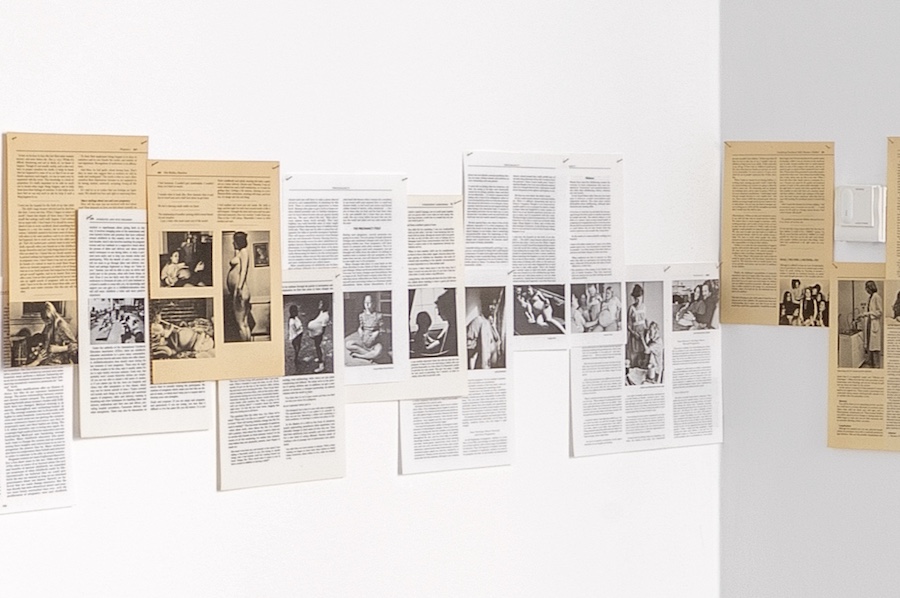
In Our Bodies Our Selves we are bodily called to live, through the gaze and the physical relocation inside the space, the battles and the observations proposed by the feminist American Group of Our Bodies Selvies, that was born in Boston in May ’69. The appropriation of the text and its following spatial relocation – it is spread on across the Swiss Institute’s walls – causes an unexpected temporality of the work. Here the authorship resides both in the restitution of the text to a public and shared dimension and in the time required to the spectator to approach the essay.
The installations, that can seem to be transparent , actually are not so . What could seem an innocuous resubmission actually it is not. So what is nodal in Tegegne’s appropriation is the subversive coefficient and the desire to problematize the present through historicize materials – such as in The Dinner Party, a powerful and black new interpretation of the namesake work made by Judy Chicago in 2002.
We are personally involved with our eyes, gaze and bodies. No image is transparent. No ideology is conclusive. Each point of view, each stratified knowledge could be a stimulating starting point in order to read prominent models and well-established habits in a chiastic way.
Until 26.10.2019
